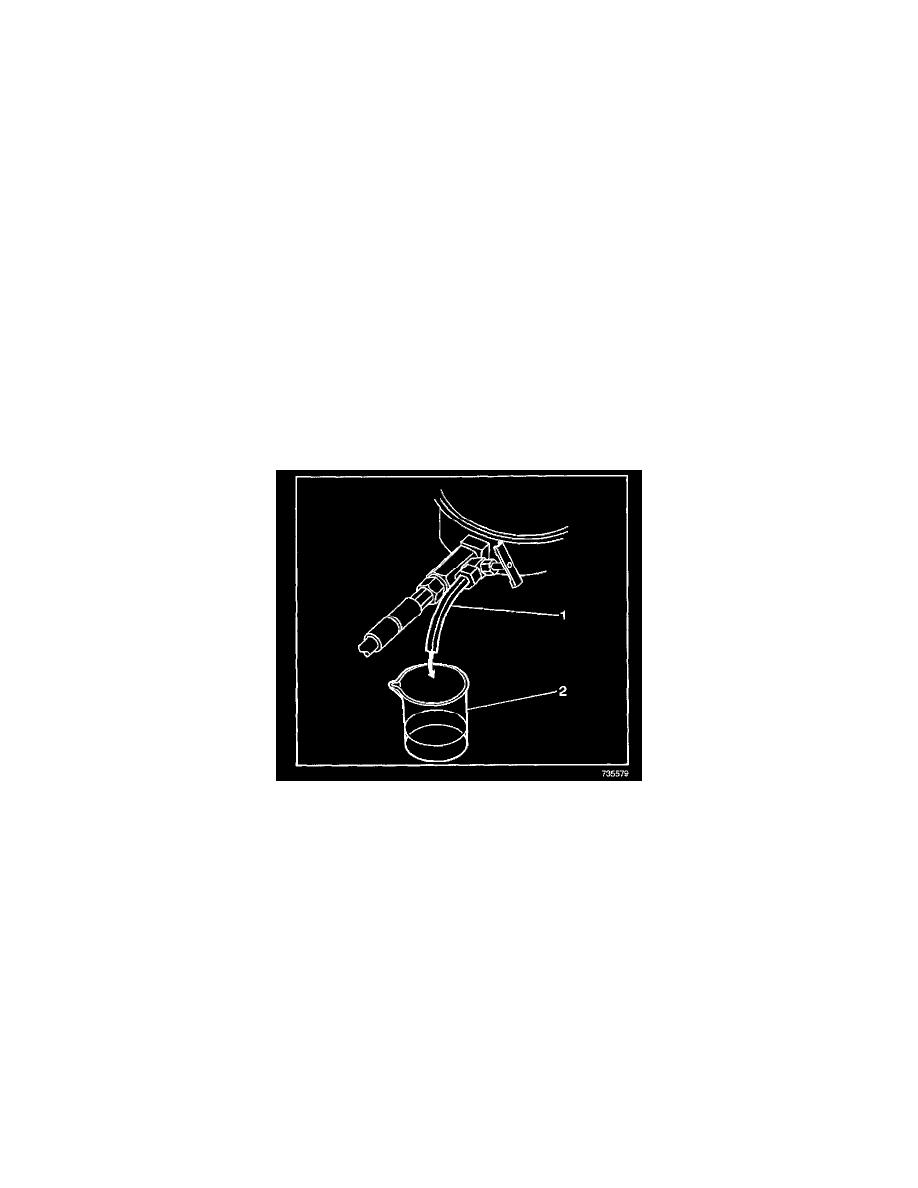Firebird V8-5.7L VIN G (2001)

Fuel: Testing and Inspection
Alcohol/Contaminants-In-Fuel Diagnosis (With Special Tool)
TEST DESCRIPTION
Water contamination in the fuel system may cause driveability conditions such as hesitation, stalling, no start, or misfires in one or more cylinders.
Water may collect near a single fuel injector, at the lowest point in the fuel rail, and cause a misfire in that cylinder. If the fuel system is contaminated
with water, inspect the fuel system components for rust, or deterioration.
Alcohol concentrations of greater than 10 percent can be detrimental to fuel system components. Excessive alcohol may cause fuel system corrosion,
deterioration of rubber components, and subsequent fuel filter restriction. Fuel with excessive alcohol may cause driveability conditions such as
hesitation, lack of power, stalling, or no start. Some types of alcohol are more detrimental to fuel system components than others. This vehicle was not
designed for fuel that contains methanol. If you suspect excessive alcohol in the fuel is the cause of a driveability condition, use the following
procedure to test the fuel quality.
TEST PROCEDURE
1. Turn ON the J 44175 fuel composition tester.
If the green LED does not illuminate, refer to the fuel composition tester user manual.
2. Verify the fuel composition tester is operational by measuring the AC frequency output with a DMM. Refer to Measuring Frequency in Diagrams.
A frequency of between 35 Hz and 48 Hz without a fuel sample in the test cell indicates that the tester is working correctly.
3. Install the fuel pressure gauge.
IMPORTANT: It will be necessary to bleed the fuel pressure gauge a few times in order to obtain an accurate fuel sample from the vehicle being
tested.
4. Close the bleed valve on the fuel pressure gauge.
5. Place the bleed hose (1) of the fuel pressure gauge into the 100 ml beaker (2).
6. Command the fuel pump ON with a scan tool.
7. Slowly open the bleed valve on the fuel pressure gauge, until an adequate fuel sample is obtained.
8. If water or sediment appears in the fuel sample, clean the fuel system and replace the fuel in the vehicle. Refer to Fuel System Cleaning. See:
Service and Repair/Fuel System Cleaning
IMPORTANT: Do not allow any substances other than gasoline, ethanol/gasoline blends, air, or acetone into the test ports of the fuel composition
tester. Contaminants in the fuel composition tester could result in misdiagnosis.
